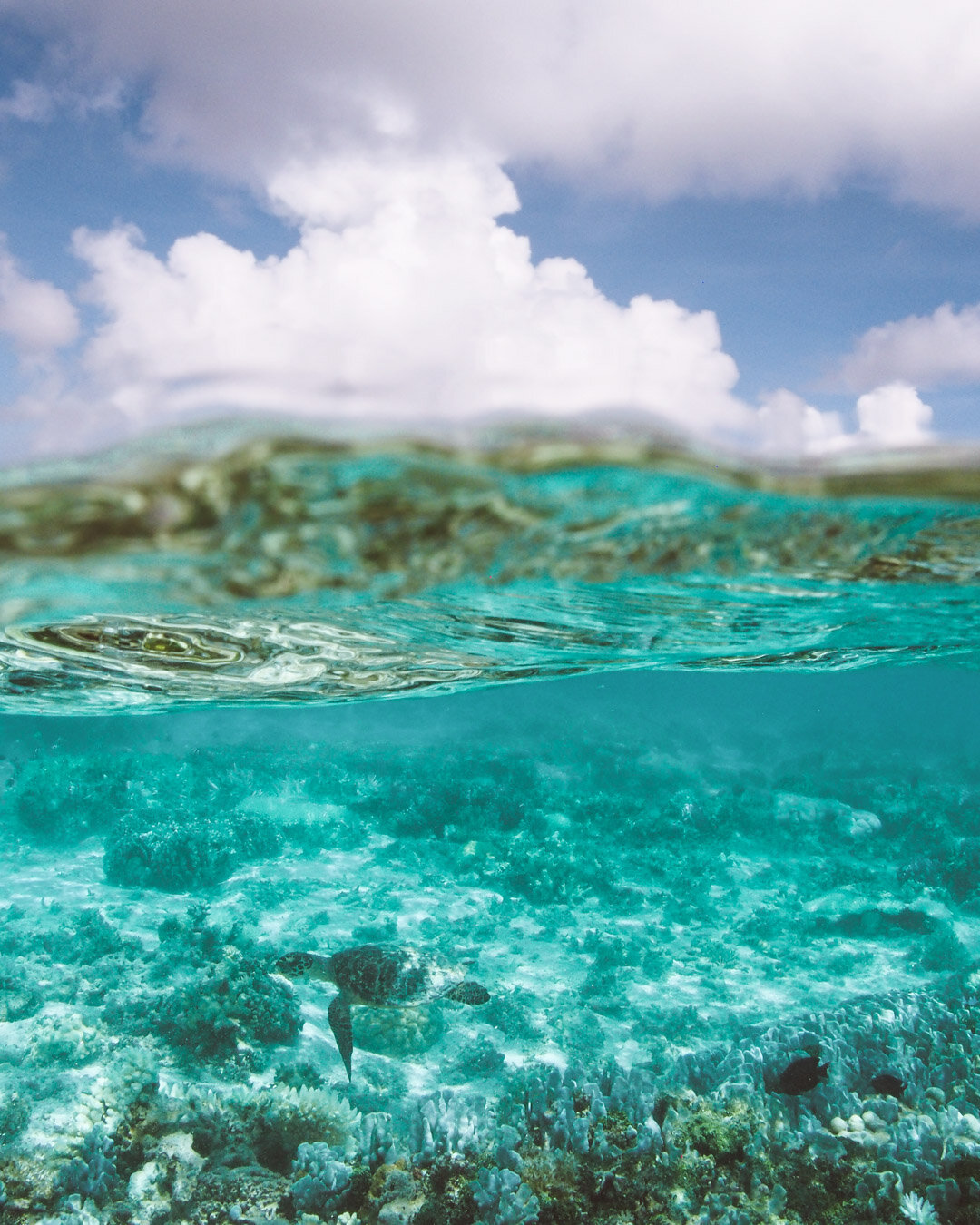Tutorial: How to take perfect underwater split photos
One of my favourite types of photos to shoot are split photos - where you can see underwater and above water at the same time. I just love the glimpse into both worlds. But they can be quite difficult to get right, so here are a few tips on how you can take your own split photos.
1/1000, f/13, ISO 400
First of all, you're obviously going to need a camera that you can take underwater. Ideally, you're want to use a wide angle lens paired with a dome port. I have an Olympus Pen E-PL5 with a 14 mm lens and Olympus housing with a 7" dome port. The dome port helps to widen the image by moving the water further away from the lens. However, you don't need this setup. GoPro's are already extremely wide and you can even get basic waterproof covers with dome lenses for your smartphone these days!
1/1600, f/8, ISO 200
There's nothing more frustrating than getting the perfect split shot to find a massive water droplet on the above part of the image. To avoid this, before you enter the water, be sure to spit on the lens. That's right, spit all over it. I like to actually lick my entire dome port before entering the water. I picked up this tip from legendary wave photographer Clark Little.
1/2000, f/8, ISO 320
Ok, settings. You're going to need a pretty fast shutter speed to capture the moving water, especially if the conditions aren't perfect. I would recommend something faster than 1/800 but depends on how flat the day is. The aperture is up to you. If you want to get everything above the water and below in focus, then you'll need to use a small aperture. But try out some wide apertures as well, to get some different artistic water shots.
1/3200, f/3.8, ISO 200
I would also recommend shooting in high burst mode. That way, you're likely to get at least one great image from a burst, especially if the water is a bit choppy.
I hope these tips are helpful for you to achieve this type of image. One of the best things about these shots are that no two are ever the same, and if you're lucky, something awesome might just swim into your photo!
1/800, f/16, ISO 800






